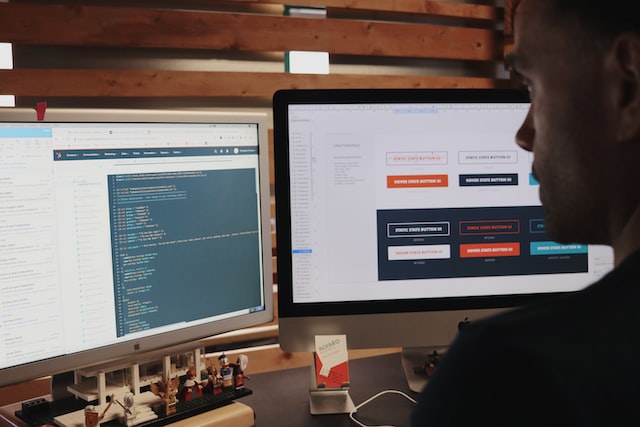
Photo by Campaign Creators on Unsplash
But the truth is, creating a website and landing pages with your audience in mind is crucial to creating a business that sells.
Here’s the deal. Your website and landing pages are one of the first elements prospects come into contact with regarding your brand.
If you don’t put your best foot forward, you risk alienating your audience and losing them completely.
Sounds dramatic?
Not really.
Would you continue pursuing a site or landing page if the look, information, or value felt off? Probably not.
To keep anyone on a page for more than a few seconds, you need to put intentionality, care, and a bit of sparkle into your web and eCommerce landing page design.
And that’s what we’re here to help with.
In today’s article, we’re taking a closer look at what it means to design a website and eCommerce landing pages with your audience in mind.
Ready to explore more?
Let’s have a look.
1. Choose a website builder in line with your unique needs
Choosing a website builder that’s aligned with your store’s unique needs is pivotal to creating a website and landing pages tailored to who you serve and what you do.
Since every business is unique, entrepreneurs should look for the best website builder for their individual needs and resources.
As far as eCommerce goes, WooCommerce is a fantastic platform that allows complete customization over your site so you can create a store and landing pages specific to your niche. We also have an incredible platform, if we do say so ourselves… but that’s neither here nor there. ?
2. Design a simple checkout process
Overcomplicating your eCommerce checkout process is a quick way to miss out on easy sales.
When a prospect is at checkout and ready to pay, they need a fast and easy way to follow through on their order.
The ideal checkout flow is only 12-14 elements, so make sure your flows don’t exceed that guideline.
You can also create an express checkout option for shoppers that use electronic payment processors, such as Shop Pay, Amazon Pay, and PayPal.
On landing pages, make sure to include a checkout link that’s easy to spot so viewers can head to checkout as soon as possible.
3. Highlight your top offers, deals, and promos
Most businesses have a few key items they’d like their audience to focus on, so why not make sure those items are highlighted front and center?
For instance, when entering Breadcrumbs’ website, you immediately notice its focus is on highlighting its lead scoring software.
In this example, Breadcrumbs displays its offer at the very top of its website.
When putting your offers front and center, you can follow Breadcrumbs’ example or you can highlight your offers:
- As a banner at the top of your website
- As a footer at the bottom of your website
- As ad poster CTAs sprinkled throughout your blog posts
- At the top of your landing pages
- As the key focal point of your landing pages (think full-page offers)
4. Don’t forget to create an industry-specific blog tab on your site
Keeping your audience’s attention as long as possible is a job in and of itself.
To give yourself a leg up, spend time curating value-driven blog posts your audience can chew on while they get to know your brand more.
When creating your posts, make sure they’re optimized for search intent and help your audience solve their top pain points, relevant to your industry and niche. For instance, check out this post on 10 reasons to use a courier service:
This example helps address the brand’s audience head-on as they discover if a courier service is right for their specific needs.
After you’ve created and uploaded a few batches of blog content, make sure to create a dedicated blog tab so your audience can head to your content in just a click or two.
5. Keep your brand colors, design elements, and overall look and feel consistent
Stay memorable by keeping the overall look and feel of your landing pages, blog, and website consistent.
That means sticking to the same color palette, design elements, spacing, fonts, and imagery.
When in doubt, leave it out!
By creating a consistent look across the board, you can implement visual cues that’ll help your audience easily identify your brand. Over time, your audience will automatically associate certain colors and images with your brand, making your impression last indefinitely.
To further paint this picture, consider the imagery and colors that come to mind when you think of the Coca-Cola brand.
When you picture an ice-cold coke, you might immediately picture visuals, such as:
- Traditional glass Coca-Cola bottles
- Polar bears
- Christmas red
- Christmas imagery
- Ice
- The sound of a can opening
Together, these cues make for a powerful memory-making machine that’ll be forever ingrained in your mind.
Wouldn’t it be incredible if your brand could trigger such specific visual memories? That’s why this practice is so crucial.
Wrap up
If you’ve made it to the end, congrats! You’ve officially read a quick guide on where to focus your website and landing page design efforts.
Ready to captivate your audience?
We hope today’s best practices have inspired you to create a website and landing pages in line with your goals and your audience’s preferences.
To your success!
